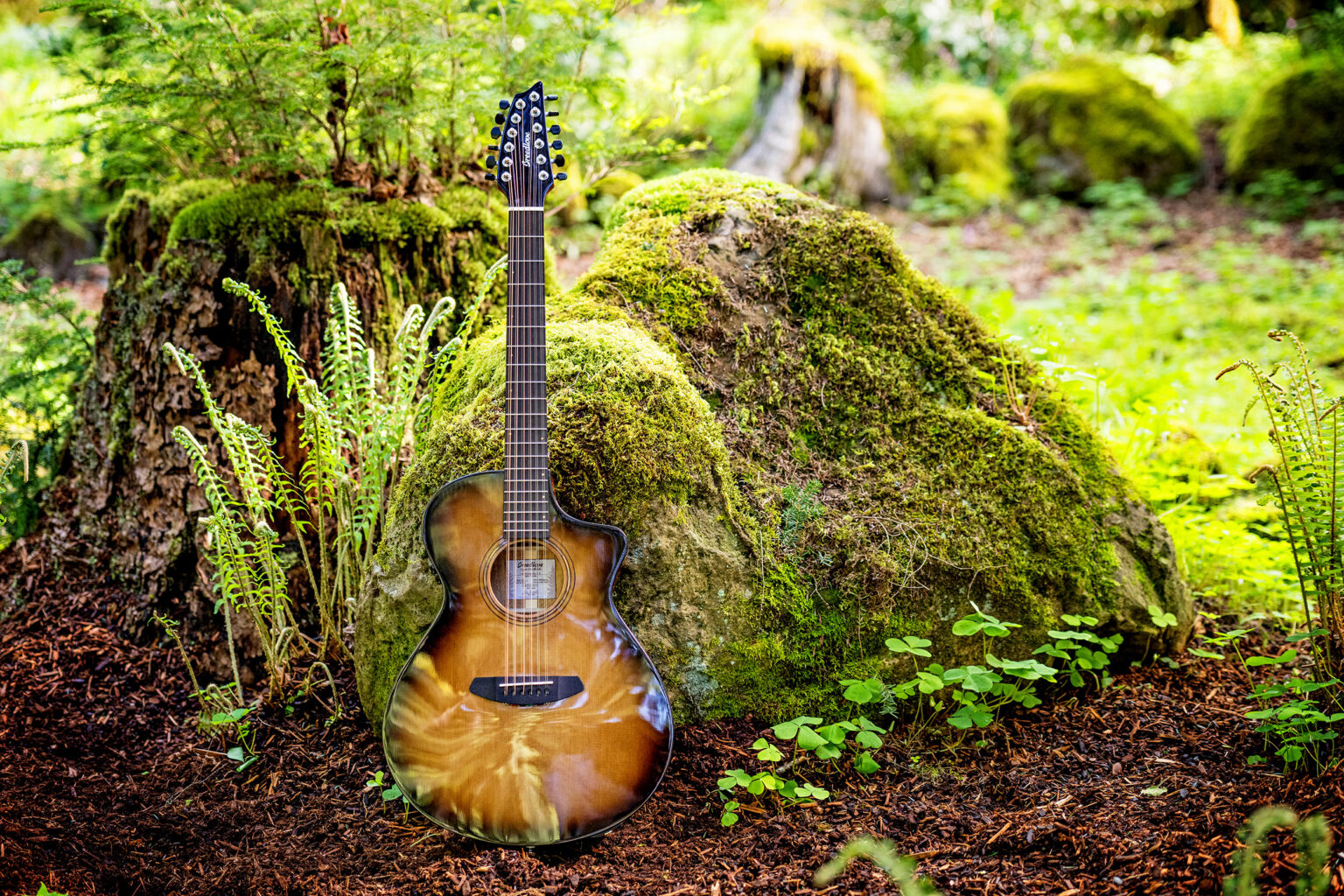
 How the most common designs affect every aspect of your guitar
How the most common designs affect every aspect of your guitar
Most guitarists have heard the term “scale length” and may even have a vague notion of what it means. But they might not know how crucial it is to every aspect of their guitars. It’s not something you can quickly see just by looking at your guitar, but it dictates how it plays and sounds.
So what is scale length? Which one is right for you? What does Breedlove offer? We’re glad you asked.
What Is Guitar Scale Length?
Scale length is the distance between the bridge saddle and the string nut of a guitar. To put it another way, it’s the length of the vibrating portion of a guitar string. That’s simple enough. But scale length’s impact on a guitar, and you as a player, is more complicated. It is a governing factor in acoustic guitar design, determining where the bridge sits on the soundboard, the distance between the frets, and, in some cases, where the neck and the body meet. Scale length also affects string tension and, therefore, your guitar’s playability and tone.
The Most Common Guitar Scale Lengths
Though there is no hard, fast rule to scale length, three main designs dominate guitar construction. You’ll find more variation in acoustic guitars, such as with our Concertina models (more on that further down). Still, these three are by far the most common.
- 5” scale length
- 75” scale length
- Short Scale.
25.5” scale length
Nothing beats a 25.5” scale length for a powerful, detailed tone. By extending the distance from the saddle to the nut, the design puts more tension on the strings, and you can feel it as soon as you start to play. While making bends more difficult, the tension adds tonal detail and articulation. The tension is also excellent for lower and alternate tunings, keeping the strings from being too floppy and pulling out of tune.
This is why you’ll find a 25.5” scale on both our Concert and Concerto models. We design these instruments for optimal harmonic content and response. The 25.5” length ensures every note jumps off their Sound Optimized soundboards.
24.75” scale length
Shorten a guitar’s scale length by only .75”, and it becomes an entirely different instrument. That’s what you get with a 24.75” scale length. It offers noticeably less string tension, which many players love, and a softer, rounder, warmer tone. It also has less attack than longer scale lengths, and that’s just the way its devotees want it.
These guitars are often fantastic strummers and excel at vocal accompaniment. Also, to accommodate the shorter neck, the frets are spaced closer together, making long stretches and complicated chord inversions easier.
Short Scale
As the name implies, short-scale designs don’t adhere to a specific scale length. Instead, any acoustic or electric guitar with a scale under 24.75” can be considered short scale. These are often smaller-bodied guitars, which many mistakenly assume are only for kids. That couldn’t be further from the truth. Their compact dimensions and shorter necks elicit a focused midrange with a strong fundamental from every note you play. It’s an addictive and unique tone that players of all genres and skill levels love.
That said, they are perfect options for children and beginners not comfortable with a full-size acoustic guitar.
The Companion body shape is our take on a professional-grade short-scale acoustic guitar. Its 23.5” scale is easy for smaller players and children to fret. And we put the same attention to quality and detail into these guitars as the rest of our line. That’s why they’re a favorite of skilled and veteran players who love their rich-yet-direct tone. We think they’re also the best travel acoustic guitars out there!
The 25” Scale Length Breedlove Concertina
Our full-size Concertina guitars get their character from a smaller body than our Concerts and Concertos but larger than the Companions. Because of this, a 25.5” scale length would have been too much. At the same time; we wanted to maintain the longer scale’s articulate tone. The answer was to go right down the middle, a 25” scale length. You still get the clarity and benefits of a longer scale with a neck perfect for the body shape.
What‘s the best scale length?
That’s entirely up to you. It depends on how the guitar feels in your hands, the sound you’re after, and your playing style. But hopefully this article gives you some insight into the various options and helps you find the perfect acoustic guitar for your needs
